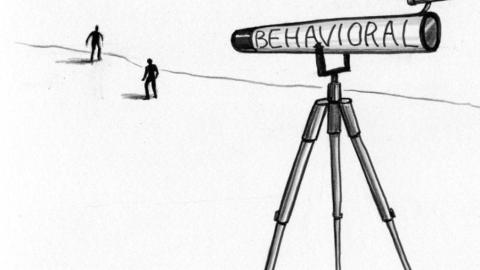Game Theory is a Behavioral Telescope

Nature’s games aren’t all “red in tooth and claw” competitions. Evolution also contains cooperation. Natural laws of social productivity can be revealed by “behavioral time-telescopes.”
1. Game theory is to the behavioral universe what the telescope was to Galileo, or calculus to Newton — a powerful new tool for probing previously unsolvable problems. Modeling biology’s behavioral choices needs different tools (nothing in physics chooses). Game theory provides “behavioral time-telescopes” to scan for long-term patterns, showing how evolved ethics can increase “fitness.”
2. Game theory’s most studied scenario is the two-player, no-communication Prisoners Dilemma (developed for Cold War nuclear strategy, assuming all are untrustworthy). Very briefly: Players have two options, cooperate or defect, and four payoffs, typically ranked Temptation > Reward > Punishment > Sucker. If both cooperate, each payoff = Reward. If only one defects, his payoff = Temptation, the other’s payoff = Sucker. Both defect, and both payoffs = Punishment.
3. Conventional “logic” says the other player is “rational” and untrustworthy, so he’ll defect. So it’s “rational” for you to defect, guaranteeing poor results. But evolution can be smarter.
4. Computer contests of iterated Prisoner’s Dilemmas show “that evolution probably selected for two stable orientations… tit-for-tat… and permanent defection.” Permanent defection = low payoffs of the “red in tooth and claw” variety.
5. Tit-for-tat involves cooperating initially, then mimicking the other player’s last move. Thus tit-for-tat-players retaliate if defected against, but forgive a defector that starts cooperating. Once established, tit-for-tat improves productivity for all, and can become an “evolutionarily stable strategy,” meaning it can’t be beaten by other approaches. Even with short-term incentives for defection, cooperation can thrive.
6. It wasn’t humanly possible to tackle game-theory problems until computers came along. But evolution has been doing game theory for millions of years — running trials of Darwin’s “endless forms most beautiful” with endless varieties of behavioral strategies, and naturally selecting the more productive. Species that evolved tit-for-tat can beat the productivity ceiling of selfish competition.
7. Key games in our nature, e.g., group hunting, are simpler than Prisoner’s Dilemmas. Hunter-gathering cultures still ruthlessly punished the uncooperative, and likely have for 10,000 generations. Their survival required it.
8. Our self-deficient, team-dependent species has evolved emotional means (e.g., fast thinking) to create workable teams. “Sympathy, gratitude, guilt, and anger [enable] cooperation,” while punishing exploitation by “cheaters.”
Any science that can’t see this social rule pattern (moral math) isn’t seeing humans clearly.
Illustration by Julia Suits, The New Yorker Cartoonist & author of The Extraordinary Catalog of Peculiar Inventions.




